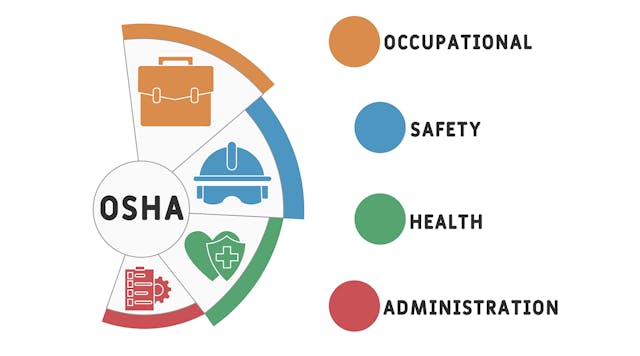We already know that the incoming Joe Biden administration can be expected to accelerate adoption of new regulations regarding Per- and Polyfluoroalkyl Substances (PFAS) after environmental advocates charged the federal government wasn’t doing enough under President Trump, but there is another environmental battle over chemicals looming as well.
The carcinogen Ethylene Oxide (EO), used extensively in manufacturing, is facing state government actions, and it is believed that the new administration will initiate new federal enforcement action. Dozens of private lawsuits have been filed against EO emitters and it’s only a matter of time before more tort lawyers join the fray.
Ethylene oxide (aka oxirane and epoxide) is an organic compound usually found in the form of a colorless and highly flammable gas. In food and textiles, it is used as a fumigant, but is mainly found in the manufacture of consumer products and non-consumer chemical intermediates. Products made with it include fabric, detergents, medicines and adhesives.
The chemical also is used as the raw material for Polyethylene terephthalate (PET) resins incorporated into the manufacture of bottles and containers, along with polyester fiber. Ethylene glycol also is derived from EO and is widely used in hospitals and other medical settings for the sterilization of medical equipment as an alternative to using steam.
Ethylene oxide has been linked to non-Hodgkin lymphoma, leukemia, multiple myeloma and breast cancer, among many other cancers and physical ailments. The United States is among the world’s largest producers of ethylene oxide and chemicals made from it. More than 90 facilities across the country work with the chemical, according to the American Chemistry Council.
Earlier Environmental Protection Agency (EPA) studies raised concerns about the chemical’s emissions, especially in communities where it is manufactured. EPA held off on developing new rules while it conducted more research, including additional gathering of emissions samples. Environmental activists wanted stronger action.
Joe Biden’s environmental campaign platform made community focus and environmental justice (EJ) prominent themes, and ethylene oxide may provide an early EJ opportunity for the new administration, note attorneys for the environmental law firm of Beveridge & Diamond.
Last March, the EPA Office of Inspector General (OIG) told the agency’s top management that it should inform residents living near EO facilities about their exposure to the chemical (although the OIG left that duty to Texas and Louisiana, which both have significant EO emissions footprints).
The OIG asserted that an EPA revised corrective action plan dealing with EO failed to address the “seriousness associated with the 25 high-priority ethylene oxide-emitting facilities that the EPA had previously identified” and added that its commitment should encompass interactive outreach with residents using a variety of risk communication tools such as virtual webinars and workshops.
Primed for Action
“The Biden administration has an unusually ripe opportunity to review—and potentially implement—the recommendations of the Inspector General in what could be an easy and early EJ example for the new administration,” the Beveridge & Diamond attorneys observe. They point out that the new administration also could ask the EPA to notify communities near identified sources of emissions.
This communications campaign might not end happily for the companies accused of excessive emissions, the attorneys added. “An official EPA warning to a community could well set the stage for collective community concerns and further embolden plaintiffs’ lawyers to reach out for potential class members.”
EPA’s perceived failure to act also prompted 11 environmental groups to ask the Washington, DC, Circuit Court to review the EPA’s rule regulating toxic emissions for about 200 chemical plants, saying the agency’s failure to act leaves those living in areas surrounding the plants exposed to unacceptable cancer risks.
It was ethylene oxide’s widespread use in a medical device sterilizing agent that most recently drew legal action from the attorney general of New Mexico, who in late December sued Sterigenics U.S., charging that its facility in the state had been releasing excessive amounts of the chemical into the atmosphere since 1989. The company denies that its releases have been excessive and argues that they have been well within safe levels.
New Mexico Attorney General Hector Balderas cited environmental justice as motivation for the action—which also is a declared priority for the incoming Biden administration. The facility in question is located in Santa Teresa, NM, an unincorporated community where 56% of the estimated 4,300 total population is Hispanic.
“Industrial companies must follow the law and maintain the highest safety standards for all communities, and it is not fair to exploit poor communities of color when they deserve protection with their health and safety,” Balderas said. “My office will always fight to hold companies accountable for jeopardizing the health and safety of all New Mexicans, especially those most vulnerable communities.”
The New Mexico suit is just the latest in a steadily rising flood of legal actions targeting ethylene oxide. In early 2019, Sterigenics closed a facility in Willowbrook, IL, in response to an order from the Illinois Environmental Protection Agency. Later that year, the company also closed a facility in Atlanta following an investigation by the Georgia Environmental Protection Division.
Ethylene oxide also has captured the attention of members of the Illinois state legislature, which is considering two separate bills aimed at restricting EO emissions. Lawmakers in other states are reported to be focusing on EO, including Georgia and South Carolina.
The early actions that resulted in facility shutdowns raised concerns about their potential negative impact on the supply of medical devices before the COVID-19 crisis erupted. A Food and Drug Administration (FDA) advisory panel in late 2019 warned that these plant shutdowns constituted a real threat to capacity and might lead to shortages of medical devices lacking the available sterilization capacity.
Many hospital procedures, including those that use hip replacement equipment and pacemakers, require the chemical for sterilization. However, many of these were considered elective procedures and were halted in the early days of government and hospital reactions to the pandemic.
“Industry is in a unique position to get ahead of the issue now to manage the risks posed by these dynamic and integrated drivers giving momentum to EO litigation and enforcement cases,” the Beveridge & Diamond attorneys say. “Now is the time to assess and mitigate company risk in a holistic, proactive and community-inclusive manner.”





































































